Neues Bachisches Collegium Musicum & Burkhard Glaetzner - Johann Christoph Friedrich Bach: 3 Symphonies (2015)

Artist: Neues Bachisches Collegium Musicum, Burkhard Glaetzner
Title: Johann Christoph Friedrich Bach: 3 Symphonies
Year Of Release: 2015
Label: Brilliant Classics
Genre: Classical
Quality: flac lossless
Total Time: 00:55:33
Total Size: 271 mb
WebSite: Album Preview
TracklistTitle: Johann Christoph Friedrich Bach: 3 Symphonies
Year Of Release: 2015
Label: Brilliant Classics
Genre: Classical
Quality: flac lossless
Total Time: 00:55:33
Total Size: 271 mb
WebSite: Album Preview
01. Symphony in B-Flat Major, WI/20: I. Largo – Allegro
02. Symphony in B-Flat Major, WI/20: II. Andante con moto
03. Symphony in B-Flat Major, WI/20: III. Minuetto
04. Symphony in B-Flat Major, WI/20: IV. Rondo. Allegretto scherzando
05. Symphony in E-Flat Major, WI/10: I. Allegro
06. Symphony in E-Flat Major, WI/10: II. Andante assai
07. Symphony in E-Flat Major, WI/10: III. Allegro assai
08. Symphony in C Major, WI/6: I. Allegro di molto
09. Symphony in C Major, WI/6: II. Andante
10. Symphony in C Major, WI/6: III. Allegro assai
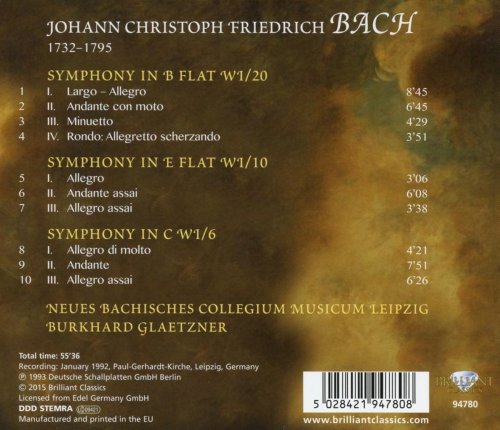
Among those of Johann Sebastian Bach’s sons who embarked on a musical career, Johann Christoph Friedrich Bach commanded the least attention, spending decades in relative obscurity at the court of Bückeburg, capital of the principality of Schaumburg-Lippe in Germany, where he played and composed chamber music for the pleasure of his sovereign and entourage. This is not to say that J.C.F. Bach's oeuvre is neither of historical interest nor aesthetic value, however; certainly it did not have a lasting effect on stylistic developments in the latter half of the 18th century, but it does reflect typical facets of that process, as demonstrated in the three symphonies included on this recording. WI/6 stems from the composer's early period, revealing the influence of the galant style whose slow movements (including this one) are notable for their poignant tenderness. Forward to WI/10, written around 1770–2, and we encounter a more sophisticated method of motivic treatment, with abrupt dynamic contrasts in the first movement and syncopated rhythms in the finale adding to the work's overall verve and momentum. On reaching Symphony WI/20, various stylistic novelties indicate Bach's assimilation of the prevailing Viennese style during his final years: a slow introduction, a four-movement pattern including a minuet, the large-scale design of the movements, the complete abandonment of the basso continuo, and the use of additional instruments i.e. bassoon and clarinets, all of which contribute to a work that is far more multidimensional and expressive by comparison, and which also reveals the particular influence of Haydn.

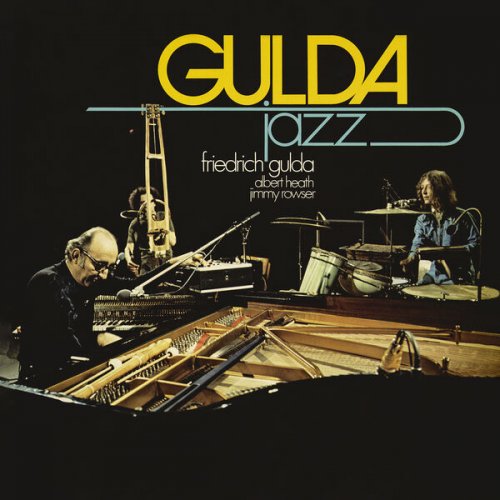
![The Mood Mosaic - Soul Seduction (2025) [Hi-Res] The Mood Mosaic - Soul Seduction (2025) [Hi-Res]](https://www.dibpic.com/uploads/posts/2025-12/1766135288_d5rmbmuwqtmya_600.jpg)
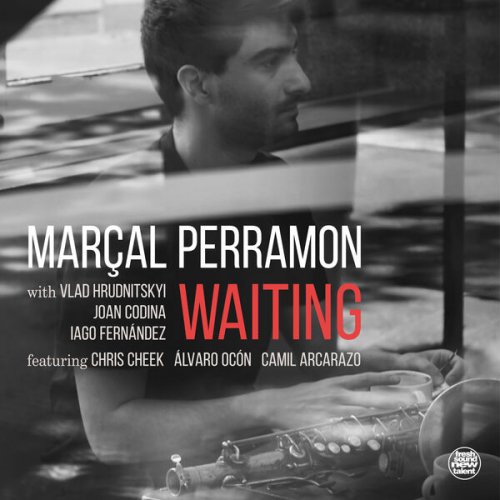
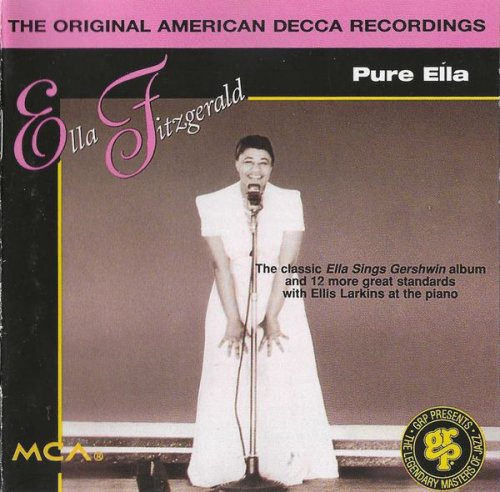
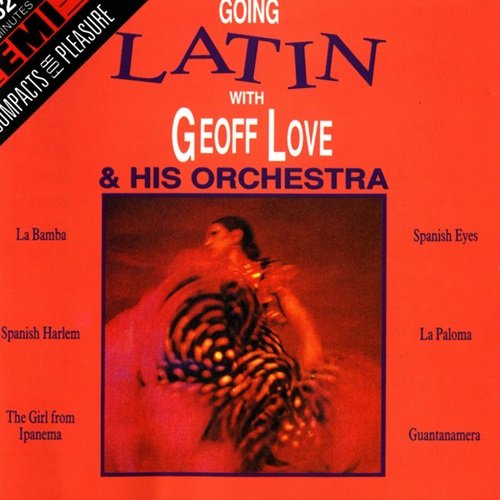
![Sergio Di Finizio - O (2025) [Hi-Res] Sergio Di Finizio - O (2025) [Hi-Res]](https://www.dibpic.com/uploads/posts/2025-12/1766111303_ri3vjk7q73zkc_600.jpg)

